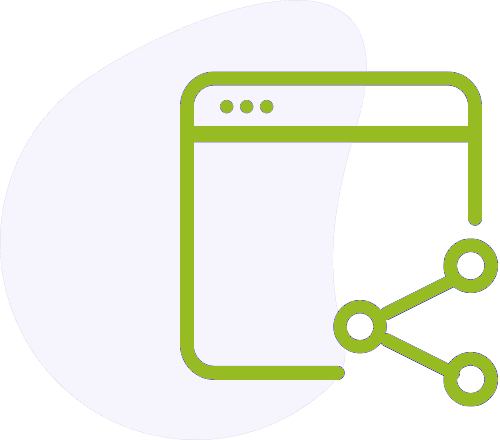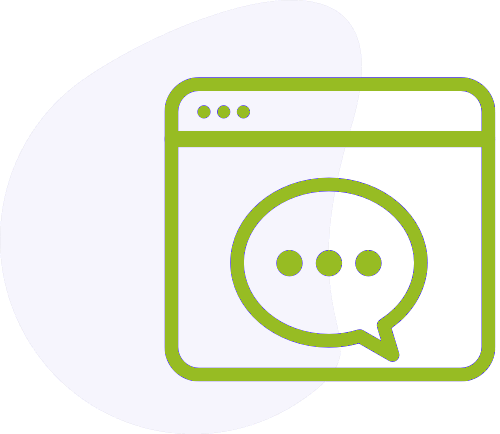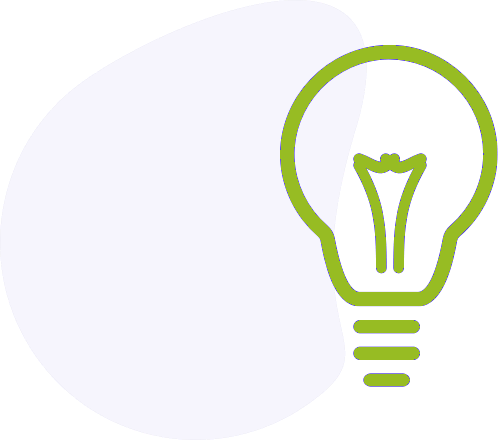Şartlar ve koşullar
- DEFINITIES
1.1. Bu Genel Hüküm ve Koşullarda kullanılan tanımlar, Sözleşmede kendilerine atanan veya aşağıda açıklanan anlama sahiptir:
Genel Hüküm ve Koşullar: Hizmetlerin kullanımına ve teslimine ilişkin bu genel hüküm ve koşullar.
B. Hizmetler: AlphaPort’un Sözleşmede açıklandığı şekilde Müşteriye sağladığı hizmetler.
C. Son Kullanıcı: Müşterinin sorumluluğu altında, Müşterinin Yazılım ortamını kullanan ve bu ortamda kullanıcı olarak oturum açabilen gerçek kişi.
D. Müşteri: Sözleşmeye dayanarak Hizmetleri satın alan kişi.
e. Sözleşme: Müşteri ve AlphaPort’un Hizmetlerin teslimini kabul ettiği sipariş onayı, onay e-postası, sözleşme veya zeyilname veya benzer yasal olarak bağlayıcı bir belge.
F. Taraf(lar): AlphaPort ve Müşteri ayrı ayrı Taraf olarak veya müştereken Taraf olarak.
G. Yazılım: Hizmet olarak Yazılım temelinde İnternet veya başka bir veri ağı aracılığıyla Müşteriye ‘uzaktan’ sunulan ve saklanan bir yazılım işlevselliğinden oluşan Hizmet.
H. AlphaPort: AlphaPort grubunun bir parçası olan ve Sözleşmede ayrıntılı olarak belirtildiği şekilde Hizmetleri sağlayan tüzel kişilik (bu durumda GreenLine Computers).
Ben. AlphaPort grubu: AlphaPort Yazılımı ve onun doğrudan ve dolaylı tüm bağlı kuruluşları.
UYGULANABİLİRLİK
2.1. Bu Genel Hüküm ve Koşullar, Hizmetlerin AlphaPort tarafından Müşteriye sağlandığı Sözleşme de dahil olmak üzere tüm teklifler ve anlaşmalar için geçerlidir.
2.2. AlphaPort, bu Genel Hüküm ve Koşulları, yürürlüğe girmesinden önceki en az 2 aylık süreyi dikkate alarak, Müşteriye önceden yazılı bildirimde bulunarak Sözleşmenin süresi boyunca değiştirme hakkına sahiptir. Bir değişikliğin Müşterinin konumunda önemli bir bozulmaya yol açması halinde, Müşteri, değiştirilen Genel Hüküm ve Koşulların yürürlüğe girdiği tarihte Sözleşmeyi feshetme hakkına sahiptir.
2.3. Genel Hüküm ve Koşulların herhangi bir hükmünün geçersiz veya iptal edilmesi halinde, Genel Hüküm ve Koşulların diğer hükümleri tam olarak yürürlükte kalacaktır. Bu durumda AlphaPort, geçersiz veya geçersiz kılınan hükümlerin amacını ve kapsamını mümkün olduğunca dikkate alarak, geçersiz veya geçersiz kılınan hükümlerin yerine geçecek yeni bir hüküm üzerinde anlaşmaya varılması konusunda müşteriyi bilgilendirecektir.
2.4. Sözlü iletişimler, vaatler, teklifler veya anlaşmalar, AlphaPort tarafından yazılı olarak onaylanmadıkça açıkça hiçbir yasal güce sahip değildir.
- SÖZLEŞMENİN İFASI
3.1. AlphaPort, Hizmetleri iyi bir yüklenici olarak ve Sözleşmenin hükümlerine ve Genel Hüküm ve Koşullara uygun olarak özenle yerine getirmeye çalışacaktır. Hizmetler, aksi açıkça kabul edilmedikçe, en iyi çaba yükümlülüğü temelinde gerçekleştirilir.
3.2. Müşteri, Anlaşmanın uygulanması için gerekli görülen bilgi ve işbirliğini AlphaPort’a zamanında sağlayacaktır. Müşteri, sağladığı bilgilerin doğru ve eksiksiz olduğunu garanti eder.
3.3. Ayarların kontrolü, AlphaPort tarafından sağlanan Hizmetlerin kullanımı ve Hizmetlerin sonuçlarının kullanılma şekli de dahil olmak üzere yönetimden Müşteri sorumludur. Müşteri aynı zamanda Son Kullanıcılara verilen talimat ve kullanımdan da sorumludur.
3.4. AlphaPort çalışanlarının Müşterinin bulunduğu yerde iş yapması durumunda, Müşteri, bilgisayar, veri ve telekomünikasyon olanakları içeren bir çalışma alanı gibi, bu çalışanlar tarafından makul olarak istenen olanakları ücretsiz sağlayacaktır. Çalışma alanı ve tesisler, çalışma koşullarına ilişkin tüm yasal ve diğer geçerli gereklilikleri karşılayacaktır. Müşteri, işe başlamadan önce AlphaPort tarafından görevlendirilen çalışanları ev ve kendi bünyesinde geçerli olan güvenlik kuralları konusunda bilgilendirecektir.
- VERİLERİN KULLANIMI
4.1. Yazılımı kullanırken Müşteri, Yazılıma veri ekler (Müşteri Verileri) ve kullanım verileri, topluca Veri olarak anılacak olan Son Kullanıcılar tarafından oluşturulur (bundan sonra “Kullanım Verileri” olarak anılacaktır). Müşteri Verileri ve Kullanım Verileri, hem Kişisel Verileri hem de kişisel olmayan verileri içerebilir.
4.2. Veriler şunlardan oluşur:
İşletim sistemi türü, tarayıcı türü, cihaz, klavye dili ve IP adresi gibi teknik bilgiler ve trafik verileri;
B. Oturum süresi, gönderilen fatura sayısı, oluşturulan mali yıllar, şifre sıfırlamalar ve benzeri, işlenen belge ve dosyaların sayısı ve türü gibi Müşteriler veya Son Kullanıcılar tarafından oluşturulan toplu veriler;
C. Destek bildirimlerinin, sohbet kutularının, güvenlik günlüklerinin ve benzerlerinin bağlamı ve içeriği gibi Müşteri veya Son Kullanıcı tarafından oluşturulan toplu olmayan veriler ve;
D. Müşteri Verilerinin görüntüleri, dosyaları veya veritabanları gibi Üretim Verileri, katı güvenlik önlemlerine tabidir.
4.3. Yukarıda belirtildiği gibi Verilerin kullanımı aşağıdaki amaçlarla sınırlıdır:
Örneğin toplu kullanım kalıplarını analiz ederek, bireysel kullanıcı tercihlerini etkinleştirerek veya sınırlı üretim verileri için yukarıda belirtildiği gibi Yazılım ve kullanıcı deneyimini geliştirmek.
B. Örneğin ek veya katma değerli Yazılımlar için ilgili bilgilerin pazarlanması ve görüntülenmesi ve ilgili pazar güncellemeleri veya bilgilerinin sağlanması.
C. Güvenlik sorunları ve olaylarını (ihlaller, sahtekarlık ve çeşitli bilgisayar korsanlığı türleri gibi) önlemek, araştırmak ve belgelemek için örneğin oturum ve oturum açma verilerini (gerçek zamanlı dahil), olay kayıtlarını ve benzerlerini analiz ederek güvenlik ve ilgili amaçlar, ve Yazılımın güvenliğini artırın.
D. İstatistikler ve araştırmalar, örneğin genel pazarlamada toplu ve anonim istatistiklerin ve Müşteriyle ilgili uygulama içi pazar istatistikleri gibi Katma Değerli Yazılım veya hizmetler olarak kullanımı da dahil olmak üzere sistemlerimizden geçen faturaların hacmiyle ilgili .
E. Uyumluluk, AlphaPort, Kullanım Verilerini Şartlar ve Koşullara uygunluk amacıyla, örneğin bir Müşteri Şartlar ve Koşulları kabul ettiğinde günlüğe kaydederek kullanabilir ve analiz edebilir.
F. Geliştirme ve test etme, örneğin toplu kullanım kalıplarını analiz etme, yeni teknolojiler ve ürünler geliştirmek için Veri sağlama, kullanıcı deneyimini iyileştirme, yeni veya güncellenmiş Yazılım yükünü veya teknoloji fizibilitesini test etme.
4.4. AlphaPort ayrıca kamuya açık veya ticari olarak mevcut kaynaklardan alınan ilgili bilgileri kullanabilir ve bu tür bilgileri, örneğin şirket kayıtlarında arama işlevleri sağlamak için yukarıda açıklandığı gibi Verilerle birleştirebilir.
4.5. Verilerin yukarıdaki amaçlarla kullanılmasının şartı, bu kullanımın, Verilerin gizliliğini, bütünlüğünü ve kullanılabilirliğini sağlamak için gerekli güvenlik önlemleri dahil olmak üzere yürürlükteki yasalara uygun olmasıdır. Kişisel Verilerin söz konusu Veri İşlemenin bir parçası olması halinde, bunların anonimleştirilmesi gerekmektedir. Teknik veya pratik nedenlerden dolayı anonimleştirme mümkün değilse AlphaPort aynı seviyede koruma sağlamak için alternatif önlemler alacaktır.
4.6. AlphaPort, burada belirtilen şartlara ve kısıtlamalara tabi olarak Verileri diğer AlphaPort grup şirketleri, satıcıları ve ortaklarıyla paylaşabilir. AlphaPort Verileri yalnızca aşağıdaki durumlarda üçüncü taraflarla paylaşacaktır:
- yasa veya düzenlemelere uymak veya yetkililerden gelen mahkeme emri veya tutuklama emri gibi yasal açıdan bağlayıcı bir talebe yanıt vermek;
B. güvenliğe veya sahtekarlığa yönelik ciddi tehditleri araştırmak veya önlemek için;
C. AlphaPort’un kısmen veya tamamen yeniden düzenlenmesi, birleşmesi, satışı veya satın alınması; bu, gizli bilgilerin AlphaPort grubunun diğer şirketlerine veya potansiyel alıcılara bir gizlilik sözleşmesi aracılığıyla burada yer alan yükümlülüklere uygun olarak ifşa edilmesini içerebilir .
4.7. Burada aksi belirtilmediği sürece AlphaPort, Verileri üçüncü taraflara satmayacak, kiralamayacak veya kiralamayacaktır.
4.8. AlphaPort, kanunen yasaklanmadığı sürece, doğrudan devlet kurumlarından alınan herhangi bir Veri açıklama talebini Müşteriye derhal bildirecektir. AlphaPort, Müşteri izin vermediği sürece bu tür taleplere yanıt vermeyecektir. AlphaPort, Verileri yalnızca mahkeme emri veya tutuklama emri gibi yasal olarak bağlayıcı taleplere uymak için devlet yetkililerine açıklayacaktır.
4.9. Müşteri Verilere ilişkin hak sahibi olmaya devam eder. Müşteri, Yazılım kullanılarak hangi Verilerin saklanacağını, düzenleneceğini, işleneceğini veya başka şekilde girileceğini belirler ve bundan sorumludur. AlphaPort, Verilerin doğruluğunu ve eksiksizliğini kontrol etmekle yükümlü değildir ve bu nedenle Müşteri tarafından sağlanan yanlış ve/veya eksik Verilerin kullanımının sonuçlarından sorumlu değildir. Müşteri, bu iddianın Müşterinin Yazılım kullanımına dayanması şartıyla, üçüncü şahısların herhangi bir şekilde AlphaPort’tan telafi edebilecekleri zararların tazmini için üçüncü şahısların taleplerine karşı AlphaPort’u tazmin eder.
FİKRİ MÜLKİYET HAKLARI
5.1. Sözleşme kapsamında Müşteriye geliştirilen veya sunulan Yazılıma veya diğer materyallere ilişkin tüm fikri mülkiyet hakları yalnızca AlphaPort’a, onun lisans verenlerine veya tedarikçilerine aittir. Müşteri, işbu Genel Hüküm ve Koşullar, Sözleşme ve kanunlarla açıkça verilen kullanıcı haklarını elde eder. Müşteriye tahakkuk eden kullanım hakkı münhasır değildir, devredilemez, rehin verilemez ve alt lisans verilemez.
5.2. AlphaPort, Müşterinin AlphaPort’a derhal yazılı olarak bilgi vermesi ve içeriği terk etmesi koşuluyla, AlphaPort tarafından geliştirilen Yazılım veya diğer materyallerin söz konusu üçüncü tarafın fikri mülkiyet haklarını ihlal ettiği iddiasına dayalı olarak üçüncü bir taraftan gelecek herhangi bir iddiaya karşı Müşteriyi tazmin eder. iddianın değerlendirilmesi ve davanın ele alınması, herhangi bir uzlaşma da dahil olmak üzere, tamamen AlphaPort’a aittir. Bu amaçla Müşteri, AlphaPort’a bu iddialara karşı kendisini savunması için gerekli vekaletname, bilgi ve işbirliğini sağlayacaktır. Bu tazminat yükümlülüğü, iddia edilen ihlalin (i) Müşteri tarafından AlphaPort’a kullanım, düzenleme, işleme veya bakım için sunulan materyallerle veya (ii) Müşterinin Yazılımda yaptığı veya uyguladığı değişikliklerle ilgili olması durumunda sona erecektir. veya başka malzemeler uygulanmıştı. Müşterinin kendisi tarafından geliştirilen Yazılımın veya diğer materyallerin üçüncü bir tarafa ait herhangi bir fikri mülkiyet hakkını ihlal ettiği kanunen geri dönülemez şekilde tespit edilmişse veya AlphaPort’un görüşüne göre böyle bir ihlalin meydana gelme ihtimali makul ise, AlphaPort mümkünse Müşterinin teslim edilen veya işlevsel olarak eşdeğer diğer Yazılımı kullanmaya devam edebilmesini sağlayacaktır. AlphaPort’un üçüncü bir şahsın fikri mülkiyet hakkının ihlali nedeniyle diğer veya daha geniş kapsamlı tazminat yükümlülüğü hariçtir.
- FİYATLAR VE ÖDEME
6.1. Müşterinin AlphaPort’a ödeyeceği ücretler Sözleşmenin ekinde belirtilmiştir.
6.2. Tüm fiyatlara KDV dahil değildir ve Euro cinsindendir.
6.3. Müşteri, AlphaPort tarafından yayınlanan bir maliyet tahmininden veya bütçeden hiçbir şekilde hak veya beklenti elde edemez. Müşteri tarafından AlphaPort’a iletilen mevcut bütçe, asla AlphaPort tarafından sağlanacak hizmetler için Taraflar arasında mutabakata varılan (sabit) bir fiyat olarak sayılmayacaktır. Yalnızca Taraflar arasında yazılı olarak mutabakata varılması durumunda AlphaPort, AlphaPort tarafından yayınlanan bir maliyet tahmininin veya bütçenin aşılması tehdidi durumunda Müşteriyi bilgilendirmekle yükümlüdür.
6.4. AlphaPort, Anlaşmanın akdedilmesinin üzerinden üç aydan az bir süre geçmediği sürece, endeksleme temelinde veya genel fiyat ve maliyet artışları sonucunda her takvim yılının 1 Ocak’ından itibaren oranları yıllık olarak artırma hakkına sahiptir. AlphaPort ayrıca Müşteriye en az 3 ay önceden bildirimde bulunmak kaydıyla Hizmetlerin ücretlerini yılda iki kez değiştirebilir.
6.5. Taraflar, AlphaPort’un kararlaştırılan performans için Müşteriden ücret aldığı tarih veya tarihleri Sözleşmeye kaydedecektir. Ödenmesi gereken tutarlar, faturada mutabakata varılan veya belirtilen ödeme koşullarına uygun olarak Müşteri tarafından ödenir. Belirli bir düzenlemenin bulunmaması halinde Müşteri, fatura tarihinden itibaren 30 gün içinde ödeme yapacaktır. Ödemenin AlphaPort tarafından belirlenecek bir banka hesabına yapılması gerekmektedir. Müşteri, faturada belirtilen tutarı kabul etmiyorsa, bunu fatura tarihinden itibaren en geç 30 gün içinde gerekçeli olarak AlphaPort’a yazılı olarak bildirmelidir. Söz konusu sürenin sona ermesinden sonra Müşteri faturayı kabul etmiş sayılır. Müşteri herhangi bir ödemeyi askıya alma veya vadesi gelen tutarları kapatma hakkına sahip değildir.
6.6. Aksi yazılı olarak kararlaştırılmadıkça, kullanılmayan krediler, kullanıcı hesapları, Yazılım veya abonelik döneminde kalan günler de dahil olmak üzere tüm ücretler peşin olarak ödenir ve iade edilmez. Bu, Yazılımın kullanılabilirliğinin yalnızca AlphaPort’a atfedilebilen nedenlerden dolayı önemli ölçüde azalmadığı sürece geçerlidir. AlphaPort, tamamen kendi takdirine bağlı olarak ve tek çare olarak, bu tür azalan kullanılabilirlik döneminde tahakkuk eden ücretler için makul bir geri ödeme teklif edebilir.
6.7. Müşterinin vadesi gelen tutarları kararlaştırılan süre içerisinde ödememesi halinde, Müşteri derhal ve başka bir temerrüt bildirimine gerek kalmaksızın ödenmemiş tutar üzerinden ticari işlemlere ilişkin yasal faizi borçlu olacaktır. Tazminatın dışarıdan temin edilmesi halinde, Müşteri aynı zamanda yargı dışı masraflar ve bu talebin tahsili veya yasal hakların başka bir şekilde kullanılmasıyla ilgili yasal işlemlerde yer alan fiili masraflar için makul bir tazminat ödemekle yükümlüdür.
6.8. Müşterinin AlphaPort’a karşı yükümlülüklerini yerine getirmemesi ve temerrüde düşmesi durumunda, AlphaPort, çıkarların dikkatli bir şekilde değerlendirilmesi ve yazılı bildirimin ardından, Anlaşmanın daha fazla uygulanmasını tamamen veya kısmen askıya alma hakkına sahiptir.
6.9. Ek işler ancak Müşteri tarafından yazılı sipariş verildikten veya ek iş tamamlandıktan sonra bir sonraki faturayla birlikte fatura edilecektir. Ek iş, yazılı olarak kararlaştırılan işin içeriği veya kapsamı dışında kalan iş olarak tanımlanır.
- GİZLİLİK
7.1. Tarafların her biri, diğer Taraftan, sağlayan Tarafın mülkiyetinde olması, gizli olması veya rekabet açısından hassas olması makul olarak beklenen Gizli Bilgiler (Gizli Bilgiler) alabilir. Taraflar, Gizli Bilgileri gizli tutacak ve diğer Tarafın Gizli Bilgilerini korumak için makul önlemleri alacak ve diğer Tarafın buna yetkili olmadığı veya zorunlu yasal hükümlerin gerektirdiği durumlar dışında üçüncü taraflara açıklamayacaktır.
7.2. Müşteri, AlphaPort tarafından sağlanan Hizmetlerin her zaman gizli nitelikte olduğunu ve AlphaPort’un, tedarikçilerinin veya Yazılım üreticisinin ticari sırlarını içerdiğini kabul eder.
7.3. Aksi yazılı olarak kararlaştırılmadıkça, AlphaPort’un Anlaşmanın sonucunu veya varlığını bir veya daha fazla (basın) bültende bildirmesine izin verilir. AlphaPort, Müşterinin adını ve logosunu AlphaPort web sitesi ve/veya referans listesine koyma ve bunları bilgi amaçlı olarak üçüncü kişilerin kullanımına sunma hakkına sahiptir.
- MAHREMİYET
8.1. Anlaşmanın kişisel verilerin AlphaPort tarafından Müşteri adına ve Müşteri amaçları doğrultusunda işlenmesini içermesi halinde, AlphaPort işleyici ve Müşteri Denetleyici olarak hareket eder. Bu sıfatla AlphaPort, işleyici olarak kendisine düşen tüm yasal yükümlülüklere uyacaktır. AlphaPort, kişisel verileri, işbu Genel Hüküm ve Koşullara Ek 1 olarak eklenen, Taraflar arasında geçerli olan işleme sözleşmesinde belirtilen koşullar altında işleyecektir.
- ŞARTLAR
9.1. AlphaPort tarafından belirtilen tüm şartlar, Anlaşmanın imzalandığı sırada AlphaPort tarafından bilinen bilgilere dayanarak AlphaPort’un bilgisi dahilinde belirlenmiştir ve mümkün olduğunca uyulacaktır.
9.2. Teslimat tarihleri ve/veya şartları herhangi bir Sözleşme, ek, eylem planı veya teklifte belirtildiği ölçüde, bunlar gösterge niteliğindedir ve aksi açıkça belirtilmediği sürece kesin son tarihler teşkil etmez. Her durumda ve dolayısıyla Tarafların yazılı olarak son tarih üzerinde açıkça mutabakata varmaları halinde, AlphaPort yalnızca Müşteri tarafından uygun, ayrıntılı ve yazılı bir temerrüt bildirimi yapıldıktan ve söz konusu bildirimde belirtilen makul süre geçtikten sonra temerrüde düşecektir. Varsayılanın süresi dolmuş olsa da AlphaPort’a hala gerektiği gibi uyulmadı.
9.3. AlphaPort, Sözleşme’nin imzalanmasından sonra meydana gelen, kontrolü dışındaki koşullar nedeniyle artık karşılanamayan (teslimat) sürelerine bağlı değildir. Herhangi bir sürenin aşılması riskinin bulunması durumunda AlphaPort ve Müşteri en kısa sürede istişareye geçecektir.
- BİLGİ
10.1. AlphaPort (örneğin servis merkezi, satış personeli veya danışmanlar tarafından) Müşterinin çalışanlarına vergilendirme, mevzuat ve düzenlemeler ve/veya hukuki veya idari nitelikteki diğer konularda önemli bilgi veya tavsiye sağlarsa, bu yapılır. Müşterinin bilgileri ve/veya tavsiyeyi doğrulaması veya uzmanlara doğrulattırması koşuluyla ve beklentisiyle. AlphaPort bu bilgi/tavsiyenin doğruluğu ve/veya eksiksizliği konusunda hiçbir sorumluluk veya yükümlülük kabul etmez.
- YÜKÜMLÜLÜK
11.1. AlphaPort’un, sözleşmenin yerine getirilmesinde veya herhangi bir yasal dayanakta atfedilebilir bir eksiklikten kaynaklanan toplam sorumluluğu, açıkça Müşteri ile mutabakata varılan bir garanti yükümlülüğünün veya tazminatın yerine getirilmesindeki herhangi bir eksiklik de dahil olmak üzere, maksimuma kadar doğrudan zararın tazmini ile sınırlıdır. söz konusu sözleşme için öngörülen fiyat tutarı kadar (KDV hariç). Sözleşmenin esas olarak bir yıldan uzun süreli bir sürekli performans sözleşmesi olması durumunda, bu sözleşme için öngörülen fiyat, bir yıl için öngörülen ücretlerin (KDV hariç) toplamı olarak belirlenir. AlphaPort’un herhangi bir hesaptaki toplam sorumluluğu, kümülatif sorumluluğu hiçbir durumda 100.000 Euro’yu (yüz bin Euro) geçmeyecektir.
11.2. AlphaPort yalnızca doğrudan zararın tazmininden sorumlu tutulabilir. Doğrudan zararın münhasıran şu anlama geldiği anlaşılmaktadır: a) AlphaPort’un bağlayıcı bir tarihte işlem yapmaması nedeniyle eski sistemini veya sistemlerini ve ilgili tesislerini daha uzun süre çalışır durumda tutmak zorunda kalması nedeniyle Müşteri tarafından maruz kalınan maliyetler, bundan kaynaklanan tasarruflar düşüldükten sonra gecikmiş performans; b) tespitin bu madde anlamında doğrudan zararla ilgili olması halinde, hasarın nedeninin ve boyutunun belirlenmesi için yapılan makul masraflar; c) Müşterinin bu masrafların bu madde kapsamında doğrudan zararın sınırlandırılmasına yol açtığını göstermesi koşuluyla, hasarın önlenmesi, sınırlandırılması veya onarılması için yapılan makul masraflar; d) diğer sistemlere geçiş, üçüncü tarafları işe alma veya acil durum prosedürlerini veya farklı çalışma yöntemlerini kullanma gibi acil durum tesislerinin maliyetleri.
11.3. AlphaPort, ciro ve kar kaybı, veri kaybı, üçüncü taraflardan gelen (hasar) iddiaları, para cezaları veya ek tahakkuklar, kaçırılan gelirler veya tasarruflar, itibar veya imajın zarar görmesi veya diğer dolaylı zararlar veya sonuç olarak ortaya çıkan zararlar dahil olmak üzere hiçbir dolaylı zarardan sorumlu değildir. AlphaPort’un herhangi bir yükümlülüğünü yerine getirmemesi veya herhangi bir yasa dışı eyleminden kaynaklanan veya bununla bağlantılı olan.
11.4. Herhangi bir tazminat hakkının var olması için bir koşul, Müşterinin hasarı tespit ettikten sonra mümkün olan en kısa sürede (ancak en geç bir (1) ay içinde) yazılı olarak AlphaPort’a bildirmesidir.
11.5. AlphaPort’un ölüm, bedensel yaralanma veya maddi hasar nedeniyle oluşan hasarlara ilişkin sorumluluğu hiçbir zaman 1.250.000 Euro’yu (bir milyon iki yüz elli bin Euro) aşmayacaktır. Bu maddenin önceki paragrafları, söz konusu zararın AlphaPort’un kasıtlı veya kasıtlı dikkatsizliğinden kaynaklanması durumunda geçerli değildir.
- MÜCBİR SEBEP
12.1. Taraflardan birinin mücbir sebep durumunda, mücbir sebep durumu devam ettiği sürece işbu Sözleşme kapsamındaki yükümlülükler askıya alınacaktır. Mücbir sebep aynı zamanda AlphaPort tedarikçilerinin kusurlarını da içermektedir. Ancak askıya alma, mücbir sebebin geçerli olmadığı yükümlülükler ve/veya mücbir sebep durumu ortaya çıkmadan önce ortaya çıkan yükümlülükler için geçerli olmayacaktır.
12.2. Mücbir sebep durumunun altmış günden uzun sürmesi halinde, mücbir sebep durumunun makul bir süre içinde çözüleceği öngörülmediği sürece, Taraflar, taahhütlü mektupla Sözleşmeyi feshetme hakkına sahiptir. Bu durumda, Anlaşma sonucunda halihazırda yapılmış olan şey, Tarafların birbirlerine herhangi bir borcu olmaksızın, orantılı olarak çözümlenecektir.
- TAŞERONLUK VE DEVİR
13.1. AlphaPort’un yükümlülüklerini yerine getirirken üçüncü tarafları kullanmasına izin verilmektedir. Sanatın işleyişi. Hollanda Medeni Kanunu’nun 7:404’ü açıkça hariç tutulmuştur. Müşterinin, AlphaPort’un önceden yazılı izni olmaksızın Sözleşme kapsamındaki hakları üçüncü bir tarafa devretmesine izin verilmez.
SÜRE VE FESİH
14.1. Sözleşme, Sözleşmede mutabakata varılan tarihte veya aksi takdirde Sözleşmenin her iki Tarafça imzalandığı tarihte başlar. Sözleşme, Sözleşmede belirtilen süre boyunca veya bunun sağlanamaması durumunda başlangıç süresi olarak bir (1) ay süreyle akdedilir. Başlangıç döneminin sona ermesinden sonra, Sözleşme, başlangıç dönemine eşit bir süre boyunca zımni olarak uzatılacaktır.
TAŞERONLUK VE DEVİR
13.1. AlphaPort’un yükümlülüklerini yerine getirirken üçüncü tarafları kullanmasına izin verilmektedir. Sanatın işleyişi. Hollanda Medeni Kanunu’nun 7:404’ü açıkça hariç tutulmuştur. Müşterinin, AlphaPort’un önceden yazılı izni olmaksızın Sözleşme kapsamındaki hakları üçüncü bir tarafa devretmesine izin verilmez.
SÜRE VE FESİH
14.1. Sözleşme, Sözleşmede mutabakata varılan tarihte veya aksi takdirde Sözleşmenin her iki Tarafça imzalandığı tarihte başlar. Sözleşme, Sözleşmede belirtilen süre boyunca veya bunun sağlanamaması durumunda başlangıç süresi olarak bir (1) ay süreyle akdedilir. Başlangıç döneminin sona ermesinden sonra, Sözleşme, başlangıç dönemine eşit bir süre boyunca zımni olarak uzatılacaktır.
- diğer Tarafın iflas etmesi;
B. diğer Tarafa ödemelerin askıya alınması (geçici veya başka türlü);
C. diğer Tarafın şirketinin tasfiye edilmesi veya durdurulması.
14.5. Fesih halinde, fesih yalnızca fesih anından sonra ortaya çıkan yükümlülükler için geçerli olacak ve dolayısıyla fesih geriye dönük bir etkiye sahip olmayacaktır.
14.6. Sözleşmenin feshi üzerine Müşterinin Hizmetlere ilişkin tüm hakları sona erecektir. AlphaPort ile Müşteri arasındaki Sözleşme kapsamındaki, fikri mülkiyet, sorumluluk, gizlilik, mücbir sebepler ve anlaşmazlıkların çözümü de dahil olmak üzere doğası ve içeriği itibarıyla devam etmesi amaçlanan haklar ve yükümlülükler, Sözleşmenin feshedilmesinden veya feshedilmesinden sonra tam olarak yürürlükte kalır.
- NADERE BEPALINGEN PROGRAMMATUUR
15.1. De bepalingen zoals omschreven in dit artikel 15 zijn uitsluitend van toepassing op de levering van Diensten door AlphaPort en het gebruik daarvan door Klant indien het Programmatuur betreft.
Uitvoering Programmatuur
15.2. AlphaPort zal zich inspannen om de overeengekomen Programmatuur steeds naar behoren te laten functioneren en streeft naar een zo hoog mogelijke beschikbaarheid, kwaliteit en beveiliging van de Programmatuur. AlphaPort behoudt zich het recht voor om de technische en functionele eigenschappen van de Programmatuur tussentijds te wijzigen om deze te verbeteren en om eventuele fouten te herstellen of om te voldoen aan de toepasselijke wet- en regelgeving. Indien een dergelijke aanpassing leidt tot een materiële afwijking in de functionaliteit van de Programmatuur, zal AlphaPort Klant daarvan schriftelijk of elektronisch op de hoogte stellen.
diğer Tarafın iflas etmesi;
B. diğer Tarafa ödemelerin askıya alınması (geçici veya başka türlü);
C. diğer Tarafın şirketinin tasfiye edilmesi veya durdurulması.
14.5. Fesih halinde, fesih yalnızca fesih anından sonra ortaya çıkan yükümlülükler için geçerli olacak ve dolayısıyla fesih geriye dönük bir etkiye sahip olmayacaktır.
14.6. Sözleşmenin feshi üzerine Müşterinin Hizmetlere ilişkin tüm hakları sona erecektir. AlphaPort ile Müşteri arasındaki Sözleşme kapsamındaki, fikri mülkiyet, sorumluluk, gizlilik, mücbir sebepler ve anlaşmazlıkların çözümü de dahil olmak üzere doğası ve içeriği itibarıyla devam etmesi amaçlanan haklar ve yükümlülükler, Sözleşmenin feshedilmesinden veya feshedilmesinden sonra tam olarak yürürlükte kalır.
15.4. AlphaPort, önleyici, düzeltici veya uyarlanabilir bakım veya diğer hizmet biçimleri için Yazılımın tamamını veya bir kısmını geçici olarak devre dışı bırakabilir. AlphaPort hizmetten çıkarma işleminin gerekenden daha uzun sürmesine izin vermeyecek ve mümkünse olağan çalışma saatleri dışında gerçekleştirilecektir.
15.5. AlphaPort, Yazılımın yeni veya değiştirilmiş bir sürümünü kullanarak Yazılımın yürütülmesine devam edebilir. AlphaPort, hizmetin veya Yazılımın belirli özelliklerini veya işlevlerini müşteriye özel olarak sürdürmek, değiştirmek veya eklemek zorunda değildir.
15.6. Mevcut Yazılıma eşdeğer ve/veya daha kapsamlı işlevlere sahip bir değiştirme uygulamasının tanıtılması durumunda, AlphaPort’un Müşteriyi, Sözleşmenin anlamı dahilinde Yazılım olacak olan bu değiştirme uygulamasına geçirmesine izin verilir. Bu gibi durumlarda AlphaPort, makul geçiş masrafları için Müşteriden ayrıca ücret talep etme hakkına sahiptir. AlphaPort bu maliyetleri önceden duyuracaktır. Müşterinin daha sonra herhangi bir masrafa katlanmak istemediğini belirtmesi halinde, Taraflar bir yıllık ihbar süresine tabi olarak Sözleşmeyi zamanından önce feshetme hakkına sahiptir. Müşteri bu bildirim süresi boyunca orijinal Yazılımı kullanabilir.
15.7. AlphaPort, (i) hizmetlerinin güvenliğini ve/veya kalitesini garanti etmek amacıyla gerekli olduğu sürece (ii) bakım veya yeni işlevler ve/veya ürünlere ilişkin bildirimler sağlamak için Yazılım dahilinde son kullanıcılarla doğrudan iletişim kurma hakkına sahiptir. veya (iii) ilgili ek hizmetleri doğrudan sunmak.
Yazılıma Erişim
15.8. Yazılımın kullanımı için, Yazılımın Son Kullanıcı tarafından kullanılabileceği AlphaPort tarafından belirlenen protokollere uygun olarak her Son Kullanıcı için AlphaPort ve/veya Müşteri tarafından bir kullanıcı adı ve şifre oluşturulacaktır. Bu kullanıcı adı ve şifre devredilemez ve kesinlikle kişiseldir. Müşteri ve Her Son Kullanıcı, kullanıcı adının ve şifrenin gizli kullanımından ve bunların kötüye kullanılmasından (sonuçlarından) sorumludur.
15.9. AlphaPort, Yazılımın Müşteri ve/veya Son Kullanıcı tarafından yetkisiz veya kötüye kullanılması durumunda ve/veya Yazılımın üçüncü taraflarca yasa dışı kullanılması durumunda Yazılıma erişimi engelleme hakkına sahiptir. Durumun aciliyeti göz önüne alındığında bunun makul bir şekilde mümkün olması halinde, AlphaPort, bir blokajdan önce Son Kullanıcıyı bu konuda bilgilendirecektir. AlphaPort yukarıda belirtilen durumlarda engelleme nedeniyle Son Kullanıcıya hiçbir zaman herhangi bir tazminat ödemekle yükümlü olmayacaktır.
15.10. Müşteri, kendisinin ve Son Kullanıcının Yazılımı kullanırken aşağıdaki kurallara uyacağını garanti eder:
- Müşteri ve Son Kullanıcı, (çevresel) ekipmanlarını, yazılımlarını, altyapılarını ve internet bağlantılarını virüslere, bilgisayar suçlarına ve (diğer) kullanıcı(lar) veya üçüncü şahıslar tarafından yasa dışı kullanıma karşı koruyacaktır;
B. Müşteri ve Son Kullanıcı, AlphaPort’un veya diğer kullanıcıların Yazılımına, (bilgisayar) ağlarına veya altyapılarına zarar vermeyecek veya bunlara zarar vermeyecek veya bunlarla bağlantılı olarak rahatsızlığa, sınırlı kullanıma veya öngörülemeyen kullanıma (diğer kullanıcılar için) neden olmayacaktır;
C. Müşteri ve Son Kullanıcı, erişim araçlarını kötüye kullanmayacak veya Yazılımın güvenliğini ihlal etmeyecek ve/veya kırmaya çalışmayacaktır;
D. Müşteri ve Son Kullanıcı, Yazılımın AlphaPort ve/veya üçüncü taraflara karşı cezai veya yasa dışı kullanımına yol açabileceğini bildikleri veya makul olarak bilmeleri gereken hiçbir şeyi yapmayacak veya ihmal etmeyecektir;
E. Müşteri ve Son Kullanıcı, Yazılıma bağlı bir bilgisayar sistemine veya onun bir kısmına izinsiz girmeyecektir (hackleme);
F. Müşteri ve Son Kullanıcı, Hizmetlerle bağlantılı olarak AlphaPort ve/veya üçüncü tarafların fikri mülkiyet haklarını hiçbir şekilde ihlal etmeyecektir; Ve
G. Müşteri ve Son Kullanıcı, AlphaPort tarafından Yazılım bağlamında sağlanan hiçbir bilgi ve veriyi, müşterinin dahili iş operasyonlarında kullanım amacı dışında yayınlamayacak, çoğaltmayacak veya başka bir şekilde kullanmayacaktır.
H. Yazılımın Müşteri ve Son Kullanıcı tarafından kullanımı kendi takdirine ve riskine sahiptir ve Müşteri ve Son Kullanıcı, Yazılımın kullanımından kaynaklanan bilgisayar sistemindeki her türlü hasardan veya veri kaybından yalnızca sorumludur.
I. Müşteri, AlphaPort tarafından sunulan Yazılımda keşfettiği hataları derhal AlphaPort’a bildirmekle yükümlüdür.
Üçüncü taraflarla entegrasyonlar ve veri alışverişi.
15.11. Müşteri, Hizmetlere ek olarak entegrasyon/veri alışverişi yapmak ve/veya hizmet satın almak amacıyla üçüncü taraflarla sözleşme yapabilir.
15.12. Müşteri, Madde 15.11’de atıfta bulunulan, AlphaPort’un (Hizmetlerin tedarikçisi sıfatıyla) hiçbir şekilde ilgili taraf olmadığı ilgili üçüncü taraflarla doğrudan anlaşmalar yapacaktır. Bu tür taraflar AlphaPort’un alt işleyicileri değildir ve AlphaPort bu tarafların eylemlerinden hiçbir şekilde sorumlu değildir.
15.13. Müşteri, AlphaPort’tan bir veya daha fazla bağlantı kullansın veya kullanmasın, Yazılım ortamını üçüncü bir tarafa (doğrudan) bağlamayı / entegre etmeyi seçerse, Müşteri işbu belgeyle AlphaPort’a, AlphaPort ile ilgili taraf arasında veri alışverişi yapmasına izin verir. bu tarafın hizmetler için gerekli olduğunu düşündüğü. Bu, kişisel veri alışverişini ve bu veri alışverişini/entegrasyonunu gerçekleştirmek amacıyla erişim veya kimlik kodlarının/belirteçlerin saklanmasını içerebilir.
15.14. Müşteri, Yazılım ile Müşteri tarafından seçilen üçüncü taraf(lar) arasında AlphaPort’tan bir veya daha fazla bağlantı kullanıp kullanmadığına bakılmaksızın entegrasyonların ve/veya veri alışverişlerinin (yetkilendirmeler dahil) doğru şekilde kurulmasından ve kurulmasından sorumludur. AlphaPort, Müşterinin ve/veya AlphaPort bağlantıları aracılığıyla Yazılımla iletişim kuran/veri alışverişinde bulunan üçüncü tarafların yazılımlarının (doğru) işleyişinden hiçbir zaman sorumlu ve/veya yükümlü değildir.
15.15. Müşterinin AlphaPort tarafından kullanıma sunulan bir veya daha fazla bağlantıyı kullanması halinde, Müşteriye, Sözleşmenin süresi boyunca, bağlantıyı kendi kuruluşu içerisinde dahili amaçlarla kullanması için devredilemez, münhasır olmayan ve alt lisansı verilemez bir kullanım hakkı verilir. sadece. AlphaPort, bağlantıların Müşteri ve/veya üçüncü taraf(lar) tarafından kullanılması karşılığında ek ücret talep etme hakkını saklı tutar.
15.16. Müşteri tarafından bağlantı yoluyla oluşturulan trafik, AlphaPort sistemini diğer kullanıcıların performansını kötüleştirecek veya bozacak şekilde yüklediğinde, AlphaPort’un kendi takdirine bağlı olarak bir istek sınırlaması (“kısma”) uygulamasına izin verilir.
Yazılımın feshedilmesinin sonuçları
15.17. Sözleşmenin feshinden sonra Müşteri, Yazılımı kullanırken girilen verilerin bir defaya mahsus teslimini talep edebilir. AlphaPort, bu verilerin Müşteri tarafından makul bir şekilde işlenebilmesi için verileri yaygın olarak kullanılan bir formatta Müşterinin kullanımına sunacaktır. Zorunlu Hollanda yasalarının hükümleri uyarınca geçerli olan durumlar dışında, AlphaPort, müşteri tarafından girilen veriler ve veriler için hiçbir saklama yükümlülüğü veya saklama süresi kabul etmez. Müşterinin, sözleşmenin feshinden hemen sonra yukarıda belirtilen veri aktarımını istediğini belirtmemesi durumunda, AlphaPort, önceden bildirimde bulunmaksızın, Yazılım kullanılarak saklanan, düzenlenen, işlenen veya başka bir şekilde girilen verileri derhal geri çekme hakkına sahiptir. depolandıkları sistemi silin ve yok edin.
15.18. Madde 15.17 hükümlerine ek olarak, Sözleşmenin feshedilmesi durumunda (AlphaPort tarafından feshedilmesi durumu hariç), Taraflar, sözleşmenin sona ermesinden sonra müşterinin ihtiyaç duyduğu her türlü destek konusunda her zaman iyi niyetle işbirliği yapacaklardır. hizmetlerin sağlanmasının Müşteriye veya Müşteri tarafından belirlenecek üçüncü bir tarafa taşınması (çıkış dönemi). Ancak AlphaPort, bu işbirliğini 3 aydan daha uzun bir süre boyunca sağlamakla yükümlü olamaz ve çıkış dönemindeki çabaları, en iyi çaba esasına göre ve ticari olarak makul olduğu ölçüde (AlphaPort’un takdirine bağlı olarak) olacaktır. Odak noktası, çıkış dönemi boyunca verilerin ve Hizmetlerin mümkün olduğunca kesintisiz kullanılabilirliğinin sağlanmasıdır. Taraflar, Müşterinin AlphaPort’tan talep ettiği çabanın kapsamını, anlaşmanın bitiminden en geç 3 ay önce tartışacaklardır. AlphaPort, çıkış dönemiyle bağlantılı olarak ortaya çıkan masrafları daha sonraki hesaplamaya göre Müşteriden tahsil edecektir.
Bildirimler
15.19. Yeni özellikler, fiyat değişiklikleri veya planlı bakım hakkındaki bilgiler yazılımda, yazılımın web sayfalarında, çevrimiçi toplulukta veya e-posta yoluyla sağlanacaktır.
15.20. Sipariş onaylarına, özel ilgi alanlarına ilişkin bilgilere, güvenliğe veya mahremiyete ilişkin bildirimler, birincil iletişim kişisinin e-posta adresine gönderilecektir.
15.21. Müşteri, birincil olarak tutulan iletişim e-postası da dahil olmak üzere güncel iletişim bilgilerini her zaman sağlamaktan sorumludur.
15.22. Tüm bildirimler verilmiş sayılacak ve AlphaPort tarafından gönderildiğinde veya yayınlandığında derhal yürürlüğe girecektir.
- GEÇERLİ HUKUK VE ANLAŞMAZLIKLAR
16.1. Hollanda yasaları, Sözleşme ve Genel Hüküm ve Koşullar için geçerlidir. Sözleşmeden ve Genel Hüküm ve Koşullardan kaynaklanan veya bunlarla ilgili tüm anlaşmazlıklar, AlphaPort’un kayıtlı ofisinin bulunduğu bölgedeki yetkili mahkeme tarafından çözülecektir.
EK 1: İşleme sözleşmesi
1. Giriş
1.1 Bu Ek 1, Sözleşme kapsamında Denetleyici adına İşleyici tarafından Kişisel Verilerin (burada tanımlandığı şekilde) İşlenmesi (burada tanımlandığı şekilde) için geçerlidir.
Tanımlar
2.1 Bu Ek 1’de yer alan Denetleyici, Veri Sahibi, Kişisel Veri, Kişisel Veri İhlali, İşleme, İşleyici ve Hassas Veri (Özel Kişisel Veri Kategorileri) tanımları, AB 2016/679 Genel Veri Koruma Yönetmeliğinde kullanılanlarla aynı anlama sahiptir (” GDPR”).
Uygulanabilirlik
3.1. Ek 1, Kişisel Verilerin Denetleyici adına İşleyici tarafından İşlenmesini düzenler ve İşleyicinin, geçerli gizlilik mevzuatına uygun olarak teknik ve organizasyonel önlemler yoluyla Denetleyici ve onun kayıtlı Veri Sahipleri adına gizliliğin korunmasına nasıl katkıda bulunacağını ana hatlarıyla belirtir. GDPR dahil.
3.2. Kişisel Verilerin Kontrolör adına İşleyici tarafından İşlenmesinin amacı, Sözleşmenin akdedilmesidir.
3.3. Ek 1, Genel Şartlar ve Koşullarda veya Taraflar arasındaki diğer önceki anlaşmalarda veya yazılı iletişimlerde Kişisel Verilerin İşlenmesine ilişkin çelişen hükümlere göre önceliklidir.
- İşleyicinin hakları ve yükümlülükleri
4.1. İşleyici, Kişisel Verileri yalnızca Denetleyici adına ve Denetleyicinin yazılı talimatlarına uygun olarak İşleyecektir. Bu Ek 1 ile Kontrolör, İşleyiciye Kişisel Verileri aşağıdaki şekilde işlemesi talimatını verir; i) yalnızca geçerli yasalara uygun olarak, ii) Sözleşme kapsamındaki tüm yükümlülükleri yerine getirmek için, iii) Denetleyicinin İşleyici Hizmetlerini olağan kullanımı yoluyla daha ayrıntılı olarak belirtildiği şekilde ve iv) bu Sözleşmede belirtildiği şekilde.
4.2. İşleyicinin, kendisi için geçerli olan mevzuatın İşleyicinin yukarıda belirtilen talimatları yerine getirmesini engellediğine inanması için hiçbir nedeni yoktur. İşleyici, farkına varır varmaz, İşleyicinin görüşüne göre geçerli gizlilik mevzuatıyla çelişen, Denetleyicinin talimatları veya diğer İşleme faaliyetleri hakkında Denetleyiciyi bilgilendirecektir.
4.3. Bu Ek 1 kapsamında İşleme Konusu Olan Veri Sahipleri ve Kişisel Verilerin kategorileri Ek A’da belirtilmektedir.
4.4. İşleyici, İşleyici için geçerli gizlilik mevzuatına uygun olarak Kişisel Verilerin gizliliğini, bütünlüğünü ve kullanılabilirliğini garanti edecektir. İşleyici, İşlemenin temsil ettiği risk ve işlenecek Kişisel Verilerin niteliği ile ilgili olarak en son teknolojiyi ve uygulama maliyetlerini dikkate alarak uygun bir güvenlik düzeyi sağlamak için sistematik, organizasyonel ve teknik önlemler alacaktır. korumalı.
4.5. İşleyici, mümkün olduğu ölçüde ve İşlemenin doğasını ve İşleyicinin kullanımına sunulan bilgileri dikkate alarak, Denetleyicinin talebe ilişkin yürürlükteki gizlilik mevzuatı kapsamındaki yükümlülüklerine uygun olarak Denetleyiciye uygun teknik ve organizasyonel önlemler konusunda yardımcı olacaktır. Veri Sahiplerinin durumu ve GDPR’nin 32 ila 36. maddeleri kapsamındaki gizlilik mevzuatına genel uyum.
4.6. Denetleyicinin, İşleyicinin Kişisel Verileri işleme şekline ilişkin güvenlik önlemleri, belgeler veya diğer bilgi türleriyle ilgili bilgi veya yardıma ihtiyaç duyması ve bu tür taleplerin, İşleyici olarak geçerli gizliliğe uymak amacıyla İşleyici tarafından sağlanan standart bilgilerin ötesine geçmesi durumunda mevzuata uygun olarak, İşleyici ek hizmetler için bu talep karşılığında Kontrolörden ücret alabilir.
4.7. İşleyici ve personeli, Sözleşme uyarınca İşleme konusu olan Kişisel Verilere ilişkin gizliliği sağlar. Bu hüküm Sözleşmenin feshinden sonra da geçerlidir.
4.8. İşleyici, Denetleyiciyi gereksiz bir gecikme olmaksızın bilgilendirerek, Denetleyicinin veri yetkililerine veya Veri Sahiplerine gizlilik olaylarının bildirilmesine ilişkin yasal gerekliliklere uymasını sağlayacaktır.
Ayrıca, İşleyici, uygun ve hukuka uygun olduğu ölçüde, Kontrolör’ü aşağıdaki konularda bilgilendirecektir:
i) Veri Sahibinden alınan Kişisel Verilerin sağlanmasına ilişkin talepler,
ii) Kişisel Verilerin polis dahil ancak bunlarla sınırlı olmamak üzere kamu makamları tarafından ifşa edilmesine yönelik talepler.
4.9. İşleyici, Denetleyici tarafından yazılı olarak yetkilendirilmediği sürece, Veri Sahiplerinin taleplerine doğrudan yanıt vermeyecektir. İşleyici, mahkeme emri veya benzer bir emir gibi kanunen zorunlu kılınmadığı sürece, Kişisel Veriler de dahil olmak üzere bu Ek 1 ile ilgili bilgileri polis gibi devlet yetkililerine sağlamayacaktır.
4.10. İşleyicinin, Denetleyicinin, İşleyicinin API’si (veya benzeri) aracılığıyla üçüncü taraf entegrasyonlarını kullanıp kullanmayacağı ve nasıl kullanacağı üzerinde hiçbir kontrolü yoktur ve dolayısıyla İşleyici bu bağlamda hiçbir sorumluluk kabul etmez. Denetleyici üçüncü taraf entegrasyonlarından yalnızca sorumludur.
4.11. İşleyici, geri bildirim almak ve Hizmetleri geliştirmek için gerekli olduğunda kullanıcılar ve Denetleyicinin Hizmetleri kullanımına ilişkin Kişisel Verileri işleyebilir. Denetleyici, Hizmetlerimizi sunma şeklimizi optimize etmek, iyileştirmek veya iyileştirmek ve yeni oluşturma özellikleri ve Hizmetlerle bağlantılı işlevsellik. AlphaPort bu tür işlemelerin denetleyicisi olarak kabul edilir ve bu nedenle işleme bu Sözleşmeye tabi değildir.
4.12. Hizmetleri kullanırken Kontrolör Yazılıma veri ekleyecektir (“Müşteri Verileri”). Denetleyici, İşleyicinin Müşteri Verilerini toplu ve anonimleştirilmiş bir biçimde müşterilere sağlanan hizmetleri iyileştirmek, araştırma, eğitim, eğitim ve/veya istatistiksel amaçlarla kullanmasını kabul eder ve buna herhangi bir itirazı yoktur.
5. Denetleyicinin hakları ve yükümlülükleri
5.1 Kontrolör, bu Ek 1’i kabul ederek şunları onaylar:
- söz konusu Kişisel Verileri İşleme ve İşleyiciye (İşleyicinin görevlendirdiği alt işleyiciler dahil) açıklamaya yasal olarak yetkilidir.
● İşleyene açıklandığı şekliyle İşlenen Kişisel Verilerin doğruluğundan, bütünlüğünden, içeriğinden, güvenilirliğinden ve yasallığından sorumludur.
● zorunlu veri koruma mevzuatı uyarınca Kişisel Verilerin İşlenmesine ilişkin Veri Sahiplerine ve denetleyici makamlara ilgili bilgileri sağlama yükümlülüklerini yerine getirmiştir.
● İşbu Sözleşme kapsamındaki Hizmetleri İşleyiciden aldıktan sonra, bu Sözleşmenin Ek A’sında açıkça kararlaştırılmadıkça, İşleyiciye hiçbir Hassas Veriyi ifşa etmeyecek/sağlamayacaktır.
- Inschakelen derden voor Verwerker en data-overdracht
6.1 Genel Şartlar ve Koşullar ile bu Sözleşme uyarınca Denetleyiciye Hizmetlerin sağlanmasının bir parçası olarak, İşleyici bu Ek 1’in uygulanmasında üçüncü tarafları (alt işleyicileri) görevlendirecektir ve Denetleyici, İşleyicinin bu sözleşmeyi gerçekleştirmesi için genel izin verecektir. yukarıda belirtilen alt işlemciler . Bu alt işleyiciler AlphaPort grubu içindeki şirketler veya harici üçüncü taraflar olabilir. İşleyici, alt işleyicilerin bu Ek 1’de belirtilen sorumlulukları ve ilgili yükümlülükleri kabul etmeyi kabul etmesini sağlar.
6.2 Kişisel Verilere erişimi olan mevcut alt işleyicilerin genel görünümü AlphaPort Güven Merkezi’nde mevcuttur ve bu web sitesi aracılığıyla onlara danışılabilir: https://www.AlphaPort.nl/trust-centre/product-search/. İşleyici, AlphaPort grubunun diğer AB/AEA merkezli şirketlerini, AlphaPort şirketi Güven Merkezi listesine dahil edilmeksizin ve kontrolöre önceden onay veya bildirimde bulunmaksızın alt işleyiciler olarak görevlendirebilir. Bu genellikle geliştirme, destek, faaliyetler vb. amaçlarla yapılır. Kontrolör, İşleyiciden alt işleyiciler hakkında daha ayrıntılı bilgi talep edebilir.
6.3 Alt işleyiciler AB dışında bulunuyorsa, Kontrolör, İşleyiciye Kişisel Verileri Kontrolörün yararına AB sınırları dışına aktarma yetkisi verir, böylece AB Model Hükümleri aracılığıyla bu amaç için meşru yasal dayanaklar garanti edilir ( ‘AB Model Hükümleri’).
6.4 Kişisel Verileri işleyen alt işleyicilerdeki herhangi bir değişiklik Denetleyiciye önceden bildirilecektir. Denetleyicinin yeni bir alt işleyiciye bildirimden sonraki 30 gün içinde itiraz etmesi durumunda İşleyici ve Denetleyici, geçerli gizlilik yasalarına uygunluğu sağlamak için alt işleyicinin uyumluluk çabalarına ilişkin belgeleri inceleyecektir. İşleyicinin hâlâ itiraz etmesi ve bunu yapmak için makul gerekçeleri olması durumunda Kontrolör, İşleyici ile olan Sözleşmeyi feshedebilir. Denetleyici, bildirimden itibaren 30 gün içinde bir alt işleyicinin kullanılmasına itiraz edebilir. Ancak özellikle çevrimiçi standart yazılımın niteliği göz önüne alındığında, Müşterinin alt işlemcilerin kullanımına itiraz edememesi mümkündür. Böyle bir durumda Müşteri, müşteri ilişkisini sonlandırabilir.
- Güvenlik
7.1. İşleyici, ürün ve Hizmetlerinde yüksek düzeyde güvenlik sağlamayı taahhüt eder. İşleyici, güvenlik düzeyini, GDPR Madde 32’de belirtilen bilgi güvenliği önlemlerine ilişkin gerekliliklere uygun olarak organizasyonel, teknik ve fiziksel güvenlik önlemleri yoluyla sağlar.
- Denetim hakları
8.1 Kontrolör, İşlemcinin bu Ek 1’e uygun olup olmadığını yılda en fazla bir kez kontrol edebilir. Kontrolörün tabi olduğu mevzuatın gerektirmesi halinde Kontrolör daha sık denetim talep edebilir. Bir denetim talep etmek için Kontrolörün, İşleyiciye önerilen denetim tarihinden en az dört hafta önce, önerilen kapsamı, süreyi ve denetimin başlangıç tarihini açıklayan ayrıntılı bir denetim planı sunması gerekir. Denetimi üçüncü bir taraf gerçekleştirecekse, bu hususun taraflar arasında yazılı olarak karşılıklı olarak kararlaştırılması gerekir. Bununla birlikte, işleme ortamının “çok kiracılı” bir ortam veya benzer bir ortam olması halinde, veri denetleyicisi, Güvenlik nedenleriyle, denetimlerin, İşleyicinin seçeceği tarafsız bir üçüncü taraf denetçi tarafından yürütülmesine karar verme yetkisini İşleyiciye verir. .
8.2 Denetimin talep edilen kapsamının, nitelikli bir üçüncü taraf denetçi tarafından önceki on iki ay içinde yürütülen bir ISAE, ISO veya benzeri güvence raporunda ele alınması ve İşleyicinin, denetlenen önlemlerde bilinen herhangi bir önemli değişiklik olmadığını teyit etmesi halinde, Kontrolör raporun kapsadığı önlemlerin yeni bir denetimini talep etmek yerine bu bulguları kabul etmeyi kabul eder.
8.3 Her halükarda denetimler, işleyicinin politikalarına tabi olarak ilgili tesiste normal çalışma saatleri içinde yapılmalı ve işleyicinin ticari faaliyetlerine makul olmayan bir şekilde müdahale edilmemelidir.
8.4 Kontrolör tarafından talep edilen kontrollerden kaynaklanan tüm masraflardan Kontrolör sorumludur. İşleyiciden gelen yardım talepleri için ücret alınabilir.
- 8.2 Denetimin talep edilen kapsamının, nitelikli bir üçüncü taraf denetçi tarafından önceki on iki ay içinde yürütülen bir ISAE, ISO veya benzeri güvence raporunda ele alınması ve İşleyicinin, denetlenen önlemlerde bilinen herhangi bir önemli değişiklik olmadığını teyit etmesi halinde, Kontrolör raporun kapsadığı önlemlerin yeni bir denetimini talep etmek yerine bu bulguları kabul etmeyi kabul eder.
8.3 Her halükarda denetimler, işleyicinin politikalarına tabi olarak ilgili tesiste normal çalışma saatleri içinde yapılmalı ve işleyicinin ticari faaliyetlerine makul olmayan bir şekilde müdahale edilmemelidir.
8.4 Kontrolör tarafından talep edilen kontrollerden kaynaklanan tüm masraflardan Kontrolör sorumludur. İşleyiciden gelen yardım talepleri için ücret alınabilir.
- Değişiklikler ve düzeltmeler
10.1 Ek 1’de yapılan değişiklikler, bu Ek 1’in yeni Ekine dahil edilecek ve her iki Tarafın da bunu imzalamasından sonra yürürlüğe girecektir.
10.2 Ek 1’in herhangi bir hükmünün geçersiz olması diğer hükümleri etkilemeyecektir. Taraflar geçersiz hükmü, geçersiz hükmün amacını yansıtan yasal bir hükümle değiştireceklerdir.
- Yükümlülük
11.1 Yanlış anlaşılmaları önlemek amacıyla Taraflar, ilgili veri koruma makamı veya yetkili makam tarafından söz konusu ödeme yükümlülüğünün söz konusu Tarafa dayatılması durumunda, her bir Tarafın Veri Sahiplerine idari para cezaları ve zararların ödenmesinden sorumlu ve sorumlu olacağını kabul ve beyan eder. yürürlükteki kanunlara uygun olarak yetkili mahkeme. Taraflar arasındaki sorumluluk sorunları, Genel Hüküm ve Koşullarda mutabakata varılan ilgili sorumluluk hükümlerine tabi olacaktır.
- Geçerli Kanun ve Forum Seçimi
12.1 Ek 1, Genel Hüküm ve Koşulların geçerli kanunlarına tabidir. Genel Hüküm ve Koşullarda atıfta bulunulan yetkili mahkeme, bu Sözleşmeyi çevreleyen anlaşmazlıkları görme konusunda mutatis mutandis yargı yetkisine sahiptir.
Ek A – Kişisel Verilerin ve Veri Konularının Kategorileri
A.1 Veri Sahiplerinin Kategorileri
❖ müşteri son kullanıcıları
❖ müşteri çalışanları
❖ müşteri iletişim kişileri
A.2 Kişisel Veri Kategorileri
❖ isim, telefon, adres, e-posta vb. gibi iletişim bilgileri.
❖ Pozisyon, şirket vb. gibi iş bilgileri.
A.3 İşlemenin Amacı
Kişisel verilerin veri işleyicisi tarafından veri sorumlusu adına işlenmesinin amacı, Hizmetin geliştirilmesi, test edilmesi, sürdürülmesi ve desteklenmesi gibi ve bunlarla sınırlı olmamak üzere, en geniş anlamda Sözleşmeye uygun hizmetlerin sağlanmasıdır. .
A.4 İşlemenin Niteliği
Kişisel verilerin denetleyici adına işleyici tarafından işlenmesi, temel olarak (işlemenin niteliği), AlphaPort’un en geniş anlamda gerçekleştirdiği ve bunlarla sınırlı olmamak üzere, örneğin depolama/barındırma, kayıt, test etme, değiştir/düzenle, rapor et, gönder.
A.5 İşleme Süresi:
Kişisel verilerin işlenme süresi Sözleşmenin geçerli olduğu süre kadardır.
Ek B – Mevcut üçüncü taraflara genel bakış (‘alt işleyiciler’)
Sözleşmenin imzalandığı sırada Kontrolörün Kişisel Verilerine erişimi olan İşleyicinin mevcut alt işleyicileri şunları içerir:
– Mollie
– Microsoft
– Muhasebe paketleri şunlardır: e-Muhasebe, Tam, Snelstart
– Web mağazası: CCV Shop, Lightspeed, Shopify, Woocommerce, Magento, Shopware, Prestashop vb.
– Sendcloud, DHL vb…
İşleyici, AlphaPort grubunun diğer AB/AEA merkezli şirketlerini, yukarıda AlphaPort şirketi belirtilmeden ve Kontrolöre önceden onay veya bildirimde bulunmaksızın alt işleyiciler olarak görevlendirebilir. Bu genellikle Hizmetin geliştirilmesi, desteklenmesi ve faaliyetleri amacıyla yapılır.










